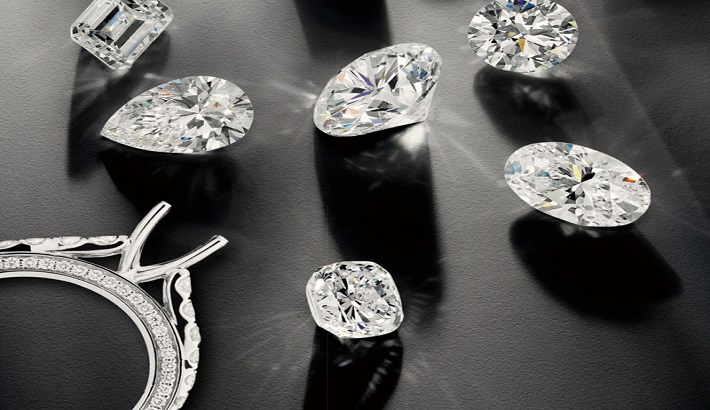In the ever-evolving landscape of the diamond industry, two contenders have emerged, each vying for the spotlight: laboratory-grown diamonds and natural diamonds. But how do these sparkling gems compare? Are laboratory-grown diamonds truly on par with their naturally occurring counterparts? Let’s delve into the depths of these glittering marvels and uncover the differences that lie beneath their mesmerizing allure.
Introduction
When we speak of diamonds, we often conjure images of exquisite jewels adorning engagement rings or glittering in prestigious necklaces. Traditionally, diamonds have been revered for their rarity, beauty, and enduring symbolism of love and commitment. However, with advancements in technology, a new player has entered the scene – laboratory-grown diamonds.
How Laboratory-Grown Diamonds are Created
Laboratory-grown diamonds, as the name suggests, are cultivated under controlled conditions within a laboratory setting. Two primary methods are employed in their creation: Chemical Vapor Deposition (CVD) and High Pressure High Temperature (HPHT). In the CVD process, man made diamonds is exposed to a carbon-rich gas, allowing carbon atoms to accumulate and form a diamond crystal. Conversely, HPHT mimics the natural conditions in which diamonds are formed deep within the Earth’s mantle, subjecting a carbon source to intense pressure and heat until it crystallizes into a diamond.
Comparison of Physical Properties
One of the most intriguing aspects of the diamond debate is the comparison of their physical properties. When it comes to hardness and durability, both laboratory-grown and natural diamonds boast exceptional strength, ranking a perfect 10 on the Mohs scale. However, variations may arise in terms of color and clarity, with natural diamonds exhibiting a wider spectrum of hues and inclusions compared to their lab-grown counterparts. Additionally, the size and shape of laboratory-grown diamonds can be tailored to specific preferences, offering greater flexibility in design options.
Environmental Impact
In today’s environmentally conscious society, the ecological footprint of diamond production cannot be overlooked. Laboratory-grown diamonds typically have a lower environmental impact than their natural counterparts. The energy consumption and carbon emissions associated with mining are significantly reduced in the laboratory setting, making them a more sustainable choice for conscientious consumers.
Economic Factors
From a financial standpoint, the cost comparison between laboratory-grown and natural diamonds is a pivotal consideration for many prospective buyers. While laboratory-grown diamonds may initially present a more budget-friendly option, market trends indicate a narrowing price gap between the two categories. Moreover, the resale value of natural diamonds may hold greater stability over time, appealing to investors seeking long-term returns.
Ethical Considerations
Ethical concerns surrounding diamond sourcing have prompted many consumers to seek out conflict-free alternatives. Laboratory-grown diamonds offer a transparent supply chain, free from the ethical dilemmas associated with traditional diamond mining. Additionally, labor conditions in diamond-producing regions have come under scrutiny, further underscoring the appeal of ethically sourced laboratory-grown diamonds.
Certification and Authentication
To ensure the diamantes de laboratorio vs diamantes naturales, certification from reputable gemological institutes is paramount. Both laboratory-grown and natural diamonds undergo rigorous testing and grading processes to assess their characteristics. Advanced identification methods, such as spectroscopy and fluorescence imaging, aid in distinguishing between the two types of diamonds with precision.
Popularity and Acceptance
The burgeoning popularity of laboratory-grown diamonds has sparked a paradigm shift within the jewelry industry. Consumer preferences are evolving, driven by factors such as sustainability, innovation, and affordability. Jewelry designers and retailers are increasingly embracing laboratory-grown diamonds, offering a diverse range of options to cater to changing tastes and values.
Cultural and Symbolic Significance
Diamonds have long held a cherished place in human history, symbolizing wealth, purity, and everlasting love. While natural diamonds boast a rich heritage steeped in tradition, laboratory-grown diamonds are forging new paths in modern symbolism. Their accessibility and versatility resonate with a younger generation of consumers, reshaping the cultural narrative surrounding these timeless gemstones.
Maintenance and Care
Proper maintenance and care are essential for preserving the brilliance of diamonds, regardless of their origin. Routine cleaning with mild detergent and gentle brushing can help remove dirt and oils from the surface, restoring their luster. Storing diamonds separately from other jewelry items can prevent scratching and minimize wear over time.
Investment Potential
For those considering diamonds as an investment, weighing the potential returns of laboratory-grown versus natural diamonds is crucial. While laboratory-grown diamonds may offer initial cost savings, the long-term investment outlook remains a subject of debate. Factors such as market demand, rarity, and consumer sentiment can influence the investment potential of both types of diamonds.
Misconceptions and Myths
In the realm of diamonds, misconceptions and myths abound, often clouding the decision-making process for consumers. Separating fact from fiction is essential to making informed choices. From concerns about durability to misconceptions about value, dispelling myths surrounding laboratory-grown and natural diamonds is key to understanding their true worth.
Choosing Between Lab-Grown and Natural Diamonds
Ultimately, the choice between laboratory-grown and natural diamonds boils down to personal preference and individual priorities. Factors such as budget, ethics, aesthetics, and sentimental value play significant roles in the decision-making process. By carefully considering these factors and weighing the pros and cons of each option, consumers can make an informed choice that aligns with their values and preferences.
Future of Diamond Industry
As technology continues to advance and consumer preferences evolve, the diamond industry is poised for further transformation. Innovations in diamond synthesis and manufacturing techniques are driving new possibilities for customization and sustainability. The future promises a dynamic landscape where laboratory-grown and natural diamonds coexist, each contributing to the rich tapestry of the jewelry market.
Conclusion
In the debate between laboratory-grown and natural diamonds, there is no clear winner – only choices. Both offer distinct advantages and appeal to different segments of the market. Whether it’s the timeless allure of natural diamonds












